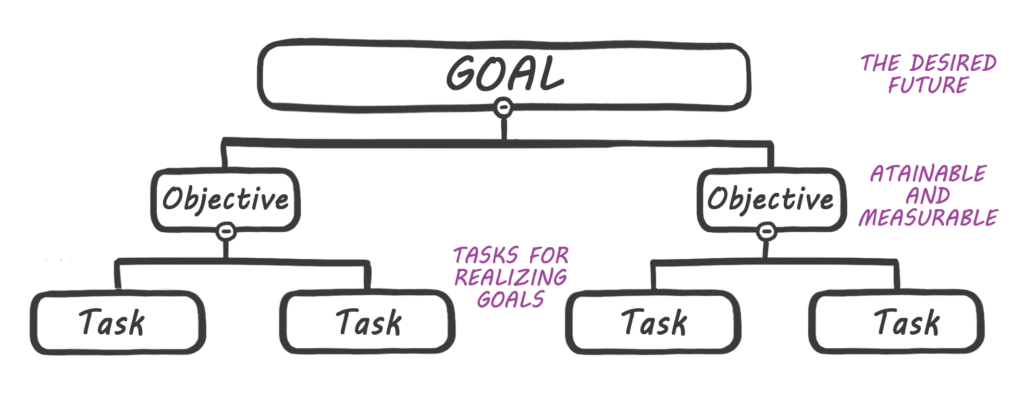In the world of planning, nothing is done without reasoning. Actions are done solely to achieve a defined goal or objective and generate value.
The overall objective of any project is to respond to a stated need. However, in order for the project to yield maximum benefit relative to the effort involved, it is best if the solution offered is as broad as possible and does not focus too narrowly on the original problem. For this to happen, we must describe the project’s objectives hierarchically, so that each objective is a step towards realizing the objective above it. The objectives at the lowest level of such a structure are the most narrowly focused ones, whereas the objectives at the highest level address the largest population segment: all the stakeholders who may benefit from or be affected by the project in some way.

In order for the objective to have value, it must be well defined, attainable and measurable or it will ultimately be useless to the project. In order to determine whether and to what extent each objective has been met, success criteria must be determined for each objective ahead of time.
In most cases, success or failure of the project is not a zero-sum game. With the exception of projects whose constraints are particularly rigid or inflexible, it is best to set a success range for each objective. When we engage in an impartial evaluation of an objective, we must remember that if we deviate even a little from what we defined as its success range, then—according to the very criteria we defined—we have failed to meet the set objective.
Once we attribute importance to evaluating the success or failure of the project, it is no longer possible to stretch the success parameters after the project is completed. Doing so would be akin to shooting an arrow first, and then drawing a target around the arrow, wherever it happened to hit.
From “why” to “how” – from goals to realization.
A project should start with the reasons for which it is needed (the “why”) and not with the proposed solution or the manner of its implementation (the “how”). Nevertheless, a project is often born out of necessity or pain and then goes directly to the proposed solution and from there the road is short to “how” and that is a mistake!
Even when a project begins like this, one has to look up and examine its necessity carefully, and find its connection to some goal that provides a good answer to the question “why?”. Why do we have to do the project and what will happen if we do not do it?
The answer to the question “Why?” Defines the real goals of the project and from which we can safely descend to the examination of the proposed solution and then to the manner of implementation.
